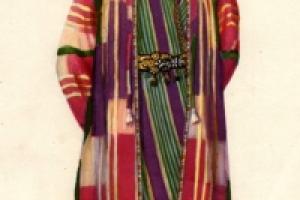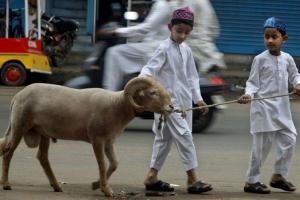All the capitals of Russia. Kyiv became the capital of Ancient Russia in the 9th century
It has been noticed that, unfortunately, there is a lot of speculation on the topic “the capital of Russia”.
For example, in Ukraine, the theory is supported that the main, historical and almost the only legitimate capital of Russia (meaning both the borders of the ancient Russian state and its modern “heirs”: Russia, Ukraine, Belarus) is exclusively Kyiv.
There are various arguments for this, the main of which can be called, probably, two:
1. Kyiv is the original and original capital of Russia.
2. Kyiv has been the capital for a very long time.
Well ... Let's check at least elementarily according to reliable sources:
GOLUN (from the 8th century BC to the 8th century AD) is 1600 years.

In the seventh-eighth century BC. to the North Caucasus from Simerechye, passing by Persia, the Oriya clans with their sons Kiy, Shchek and Khoriv move. Here Orius is separated from his sons and each settles on his own land. Kiy settled in the Elbrus region and founded the city of Kiyar, not far from the present Pyatigorsk. Ory (Orey) moved north and founded his capital city Golun on the Don land near the confluence of the Seversky Donets and the Don, the Greeks called this city in their own way - Gelon.
"We are building a city there, and then Golun will be, as the bare steppe and forests .... ... Golun, a city of Russians on the Don land ..."Golun was a glorious city and had three hundred strong cities. And Kyiv (this is a new city in relation to the old Kiyar, it was founded on the Dnieper in the 5th century AD) had fewer cities, at noon 10 cities and that's all, and there were few villages. In general, there were all births in the steppes, and life was changed at noon.And they gave it to the Greeks, in general, for gold chains and rings and necklaces. Worn to the Greeks to exchange beer for wine, and they created it for the exchange themselves ... "- Veles book.

LADOGA (862 - 864) - THIS IS 2 YEARS.
Ladoga, which arose in the middle of the 8th century, is named the residence of Rurik in the Ipatiev list of The Tale of Bygone Years. According to this version, Rurik sat in Ladoga until 864, and only after that he founded Veliky Novgorod.
Ladoga is not only one of the most ancient cities in Russia, it is also one of the most ancient Slavic outposts, which was constantly attacked by its northern neighbors. The fortress was burned, destroyed, but again and again rose from the ashes, putting up a barrier to the invaders. In the 9th century, the wooden walls of the Ladoga fortress were replaced with stone ones made of local limestone, and Ladoga became the first stone fortress in Russia.

NOVGOROD (862 - 882)— THIS IS 20 YEARS.
According to other chronicles, Veliky Novgorod became the first capital of the Old Russian state.
Veliky Novgorod - one of the most ancient and famous Russian cities, was first mentioned in the Novgorod Chronicle under 859 in connection with the name of the legendary Prince Rurik, who began advancing to Russia from Ladoga.
Already in the first centuries of its existence, Novgorod played an important role in the events that took place on Russian soil, in fact, becoming the first capital of Russia. The location of Novgorod was so advantageous geographically (the city stood at the crossroads of waterways running from the Baltic from the north and west to the south and east) that by the middle of the 9th century it had become a major commercial, political and cultural center of the northwestern lands.
Novgorod did not remain the capital for long. In 882, Prince Oleg made a trip to Kyiv and moved the capital there. But even after the transfer of the princely residence to Kyiv, Novgorod did not lose its significance. Being in the zone of lively trade contacts with foreign countries, Novgorod was a kind of "window to Europe".
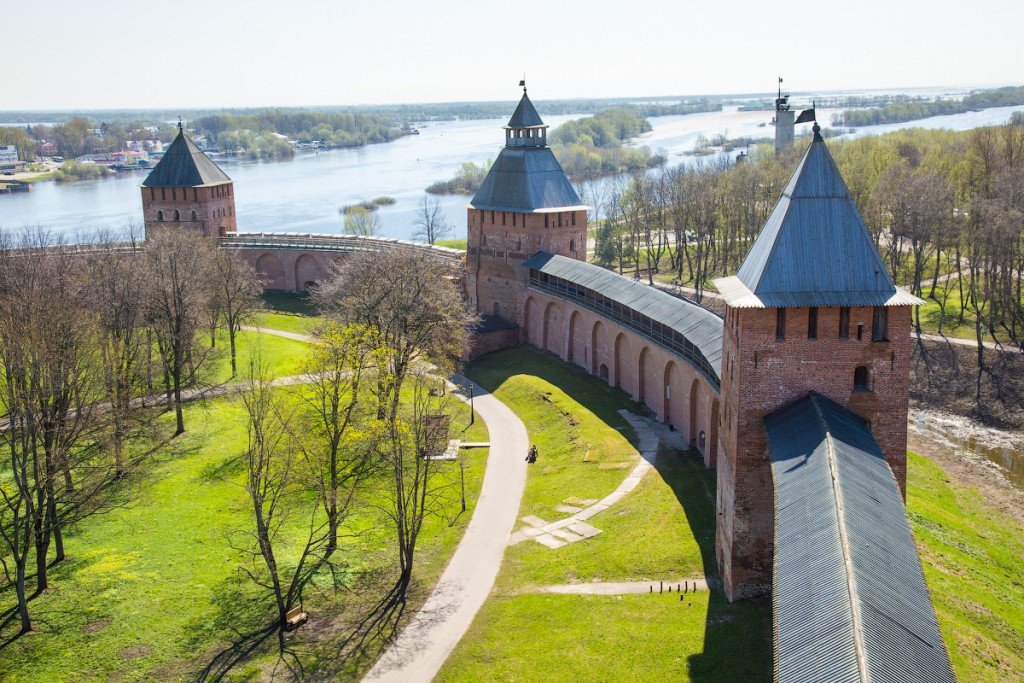
Photo: strana.ru
Kyiv (882 - 1243) - THIS IS 361 YEAR.
In 882, Rurik's successor, Prince Oleg the Prophet of Novgorod, captured Kyiv, which from that time became the capital of Russia. With the adoption of Christianity by Russia at the end of the 10th century, Kyiv became the residence of the Russian metropolitan.
The coincidence of the political and ecclesiastical center, combined with a long period of autocracy of the Kyiv princes, led to the formation of a stable institution of the capital in Russia, which was not typical for most European countries of that time.
In ancient Russian literature, the concept of the capital corresponded to the expression "oldest table" and retained its meaning until today"capital city" and the epithet "first throne". Kyiv received the name "Mothers of Russian cities", which was a tracing-paper from the Greek word "metropolis" and likened the city to Constantinople.
Kyiv did not have its own princely dynasty, control over it was the subject of constant struggle, which, on the one hand, led to a steady decline in its real role, and on the other, made it an object around which the interests of all Russian lands intertwined.

Ancient Kyiv
Simultaneously with Kyiv for the role of capitalsother cities of the Russian principalities also applied. For example - Tmutarakan.
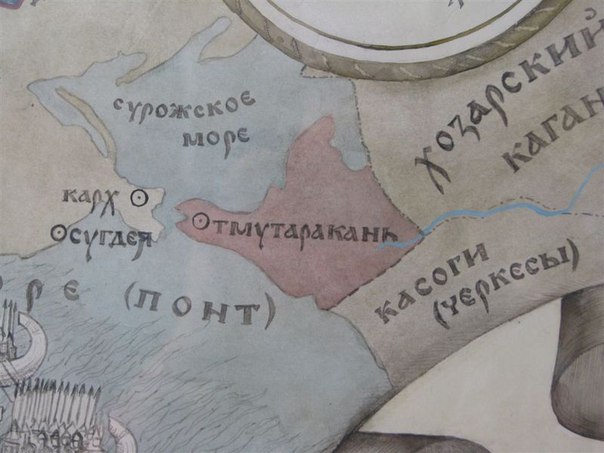
Since 1169, when Andrei Bogolyubsky, having a recognized seniority, for the first time refused to take the Kyiv throne, the connection between the possession of Kyiv and the status of the most powerful prince became optional. In the subsequent time, the senior princes of Suzdal and Volyn preferred to transfer Kyiv to their minor relatives, while the Chernigov and Smolensk princes more often ruled personally. Nevertheless, the title of princes of "all Russia" continued to be attached to the princes who had ever visited Kyiv during their lives. Both in ancient Russian sources and in the eyes of foreigners, the city continued to be perceived as a capital.
In 1240, Kyiv was destroyed by the Mongols and fell into decay for a long time. The fight for him is over. The Grand Dukes of Vladimir Yaroslav Vsevolodovich (1243) and Alexander Yaroslavich Nevsky (1249) were recognized as the oldest in Russia, and Kyiv was transferred to them.
However, they preferred to leave Vladimir as their residence. In the next era, until the conquest of Kyiv by Lithuania (1362), it was ruled by provincial princes who did not claim all-Russian supremacy.
VLADIMIR (1243 - 1389) IT IS 146 YEARS.
Vladimir-on-Klyazma, founded in 1108 by Vladimir Monomakh, became the capital Northeast Russia in 1157, when Prince Andrei Yurievich Bogolyubsky moved his residence here from Suzdal.
The recognition of seniority in the princely family, indeed, turned out to be divorced from the Kyiv table, but it was attached to the personality of the prince, and not to his city, and by no means always belonged to the Vladimir princes.
The time of maximum influence of the principality was the reign of Vsevolod Yurievich the Big Nest. His supremacy was recognized by the princes of all Russian lands, except for Chernigov and Polotsk, and henceforth the Vladimir princes began to be called "great".
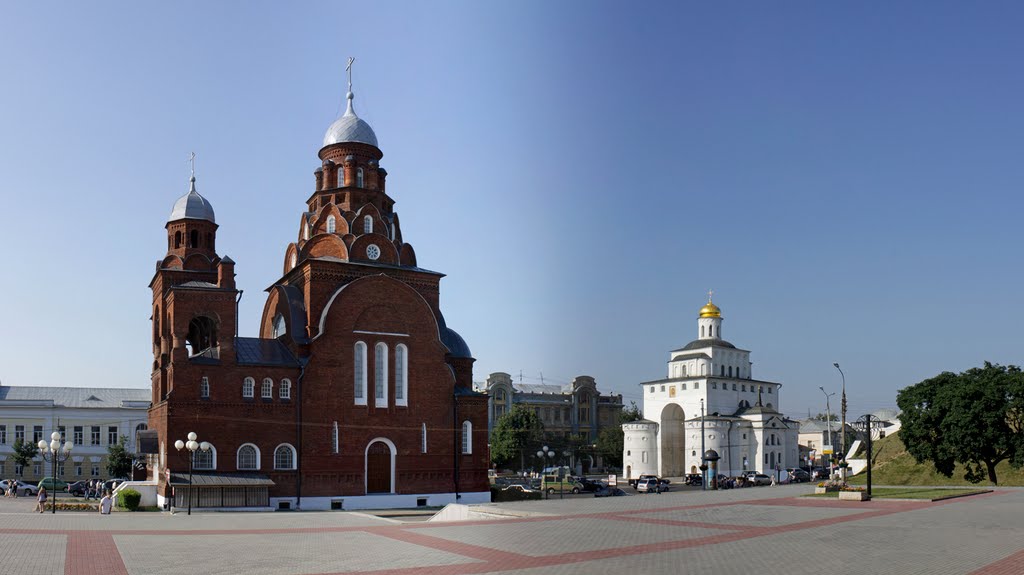
Vladimir - Golden Gate and Trinity Church
After the Mongol invasion (1237-1240), all Russian lands came under the supreme authority of the Mongol Empire, subordinate to its western wing - the Ulus of Jochi or the Golden Horde. And it was the Grand Dukes of Vladimir who were nominally recognized in the Horde as the oldest in all of Russia. In 1299, the metropolitan moved his residence to Vladimir. From the beginning In the 14th century, the princes of Vladimir began to bear the title of "great princes of all Russia."
MOSCOW 1. (1389 - 1712)- THIS IS 323 YEARS
Moscow was first mentioned in chronicles in 1147. In 1263, the youngest son of Alexander Nevsky, Daniil Alexandrovich, received Moscow as inheritance. Without claiming the great reign of Vladimir, he was able to significantly expand the territory of his principality at the expense of neighboring Smolensk and Ryazan volosts. This allowed Daniel to recruit a large number of service people who formed the basis of the powerful Moscow boyars. In modern historiography, this factor is considered as the most important in the process of the successful rise of Moscow.
In 1325 the metropolitan moved to Moscow from Vladimir.
In 1547 Ivan IV assumed the royal title, and until 1712 Moscow became the capital of the kingdom - the Russian State.

Moscow became the capital again on March 12, 1918 by the decision of the Soviet government.
SAINT PETERSBURG / PETROGRAD (1712 - 1918) IT IS 206 YEARS.
In 1712, by the will of Peter I, the capital of Russia was moved to St. Petersburg, specially founded as a capital city.
Thus, Kyiv does not have the right to be called the “only correct” capital of Russia, neither by its originality nor by its duration, just like any other capital in the entire history of Russia.

All the capitals in Russia =================== It has been noticed that, unfortunately, there is a lot of speculation on the topic "the capital of Russia". For example, in Ukraine, the theory is supported that the main, historical and almost the only legitimate capital of Russia (meaning both the borders of the ancient Russian state and its modern “heirs”: Russia, Ukraine, Belarus) is exclusively Kyiv.
Arguments for this are various, the main of which can be called, probably, two: - Kyiv is the original and original capital of Russia. - Kyiv has been the capital for a very long time. Well ... Let's check at least elementary on Wikipedia:
Ladoga (862 - 864) is 2 years old. =========================== Ladoga, which arose in the middle of the 8th century, was named the residence of Rurik in the Ipatiev list of The Tale of Bygone Years. According to this version, Rurik sat in Ladoga until 864, and only after that he founded Veliky Novgorod. Ladoga is not only one of the most ancient cities in Russia, it is also one of the most ancient Slavic outposts, which was constantly attacked by its northern neighbors. The fortress was burned, destroyed, but again and again rose from the ashes, putting up a barrier to the invaders. In the 9th century, the wooden walls of the Ladoga fortress were replaced with stone ones made of local limestone, and Ladoga became the first stone fortress in Russia.
Novgorod (862 - 882) is 20 years old. ================================ According to other chronicles, Veliky Novgorod became the first capital of the Old Russian state. Veliky Novgorod - one of the most ancient and famous Russian cities, was first mentioned in the Novgorod chronicle under the year 859 in connection with the name of the legendary prince Rurik, who began advancing to Russia from Ladoga. Already in the first centuries of its existence, Novgorod played an important role in the events that took place on Russian soil, in fact, becoming the first capital of Russia. The location of Novgorod was so advantageous geographically (the city stood at the crossroads of waterways running from the Baltic from the north and west to the south and east) that by the middle of the 9th century it had become a major commercial, political and cultural center of the northwestern lands.
Kyiv (882 - 1243) is 361 years old. ============================== In 882, Rurik's successor Prince Oleg the Prophet of Novgorod captured Kyiv, which from that time became the capital of Russia. With the adoption of Christianity by Russia at the end of the 10th century, Kyiv became the residence of the Russian metropolitan. The coincidence of the political and ecclesiastical center, combined with a long period of autocracy of the Kyiv princes, led to the formation of a stable institution of the capital in Russia, which was not typical for most European countries of that time.
Kyiv did not have its own princely dynasty, control over it was the subject of constant struggle, which, on the one hand, led to a steady decline in its real role, and on the other, made it an object around which the interests of all Russian lands intertwined.
Since 1169, when Andrei Bogolyubsky, having a recognized seniority, for the first time refused to take the Kyiv throne, the connection between the possession of Kyiv and the status of the most powerful prince became optional. In the subsequent time, the senior princes of Suzdal and Volyn preferred to transfer Kyiv to their minor relatives, while the Chernigov and Smolensk princes more often ruled personally. Nevertheless, the title of princes of "all Russia" continued to be attached to the princes who had ever visited Kyiv during their lives. Both in ancient Russian sources and in the eyes of foreigners, the city continued to be perceived as a capital. In 1240 Kyiv was destroyed and fell into decay for a long time. The fight for him is over. The Grand Dukes of Vladimir Yaroslav Vsevolodovich (1243) and Alexander Yaroslavich Nevsky (1249) were recognized as the oldest in Russia, and Kyiv was transferred to them. However, they preferred to leave Vladimir as their residence. In the next era, until the conquest of Kyiv by Lithuania (1362), it was ruled by provincial princes who did not claim all-Russian supremacy. Vladimir (1243 - 1389) is 146 years old. ================================ Vladimir-on-Klyazma, founded in 1108 by Vladimir Monomakh, became the capital of the North-Eastern Russia in 1157, when Prince Andrei Yurievich Bogolyubsky moved his residence here from Suzdal. The recognition of seniority in the princely family, indeed, turned out to be divorced from the Kyiv table, but it was attached to the personality of the prince, and not to his city, and by no means always belonged to the Vladimir princes. The time of maximum influence of the principality was the reign of Vsevolod Yurievich the Big Nest. His supremacy was recognized by the princes of all Russian lands, except for Chernigov and Polotsk, and henceforth the Vladimir princes began to be called "great".
In 1299, the metropolitan moved his residence to Vladimir. From the beginning In the 14th century, the princes of Vladimir began to bear the title of "great princes of all Russia." Moscow 1. (1389 - 1712) is 323 years old ============================== Moscow was first mentioned in the annals in 1147 year. In 1263, the youngest son of Alexander Nevsky, Daniil Alexandrovich, received Moscow as inheritance. Without claiming the great reign of Vladimir, he was able to significantly expand the territory of his principality at the expense of neighboring Smolensk and Ryazan volosts. This allowed Daniil to attract a large number of service people to his service, who formed the basis of a powerful Moscow boyars. In modern historiography, this factor is considered as the most important in the process of the successful rise of Moscow. In 1325, the metropolitan moved to Moscow from Vladimir. In 1547, Ivan IV took the title of king, and until 1712 Moscow became the capital of the kingdom - the Russian State. Moscow became the capital again on March 12, 1918 by the decision of the Soviet government. St. Petersburg / Petrograd (1712 - 1918) is 206 years old. ======================== In 1712, by the will of Peter I, the capital of Russia was moved to St. Petersburg, specially founded as a capital city. Thus, Kyiv does not have the right to be called the “only correct” capital of Russia, neither by its originality nor by its duration, just like any other capital in the entire history of Russia.
Russia is a state that was first formed during the unification of ancient, Slavic tribes under the rule of a prince from the Rurik dynasty. The lands of these tribes began to be called Russian.
“Where did the Russian land come from?”
"The Tale of Bygone Years", written by the monk Nestor in the 12th century about those events, as well as archaeological research, suggests that the Slavic tribes are the original inhabitants of Europe. “And from those Slavs the Slavs dispersed over the earth and were called by the names of those places where they sat down.” And they parted like this:
Glades - along the western bank of the Dnieper.
Drevlyans - along the Pripyat River.
Dregovichi - between the rivers Pripyat and Berezina.
Krivichi - in the upper reaches of the Volga, Dnieper, Western Dvina.
Ilmen Slavs (the northernmost tribe) - on Lake Ilmen, along the Volkhov River.
Vyatichi (the easternmost tribe) - along the Oka.
By superimposing these settlements on a modern map, one can imagine the geography of the Slavic lands. This is Russia.
Slavic communities
Tribes, communities led an economic way of life, namely, they were engaged in arable farming and raising cattle. Living in forests and on the banks of rivers, they hunted, fished, and collected wild honey. Later, traditional crafts also develop, but there is still no division into artisans and farmers. Every Slav knows everything.
From about the 6th century, tribal fortified settlements - cities - appeared. Where the glade lived - Kyiv, among the Ilmen Slavs - Novgorod, among the Krivichi - Smolensk. In the 9th-10th centuries, their number reaches about 25, and in the 12th century - more than 300. Ancient Russia is country of cities.
Scientists continue to argue about the origin of the word "Rus". Supporters of the Norman theory cannot stop at one version: some believe that the Finnish name for the Swedes "rutsi" is the basis; others have found the place Roslagen on the map and, calling it the birthplace of the first prince Rurik, are looking for the origin of the word in it; they also admit that the Swedish noun "rower" (rus) is one-root. Slavic legends connect great Russia with the river Ros, which flows through Ukraine. There are still options, many of them, which can neither be confirmed nor denied.
Formation of the ancient Russian state. 862
History of Russia begins with the fact that, having freed themselves from the Vikings, who were collecting tribute in the Slavic lands, the tribes started an internecine war for power. "Rod stood on the clan." Tired of strife, the leaders agreed on the decision to invite a ruler from outside. There was nothing offensive in this; many peoples did so. A foreigner, not associated with local tribes, will be an impartial judge.
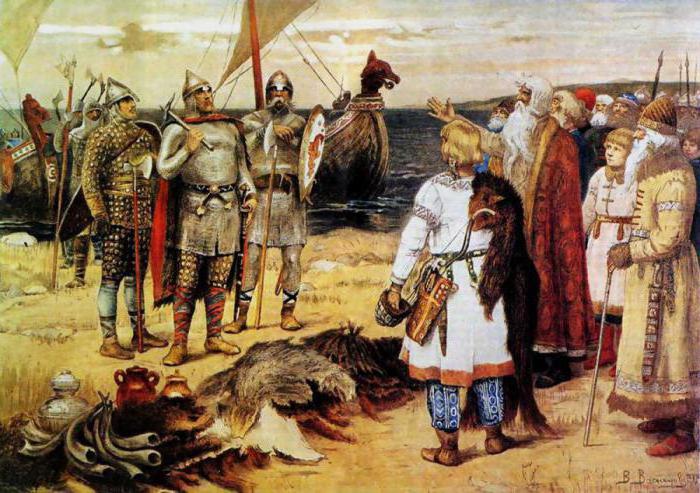 The invited princes of the Rurik dynasty came to Russia in three. The elder brother Rurik sat down to reign in Novgorod, the middle one - on Beloozero, and the younger one - in Izborsk. But beforehand, an agreement was concluded with them, according to which they undertook to judge according to local customs, and the society was to support them and the squad. The Varangians quickly became “glorified”, already the grandson of Rurik was called Svyatoslav. “And from those Varangians the Russian land was nicknamed,” wrote the chronicler Nestor.
The invited princes of the Rurik dynasty came to Russia in three. The elder brother Rurik sat down to reign in Novgorod, the middle one - on Beloozero, and the younger one - in Izborsk. But beforehand, an agreement was concluded with them, according to which they undertook to judge according to local customs, and the society was to support them and the squad. The Varangians quickly became “glorified”, already the grandson of Rurik was called Svyatoslav. “And from those Varangians the Russian land was nicknamed,” wrote the chronicler Nestor.
After the imminent death of the younger brothers, all the lands came under the rule of Rurik. Feeling strong hand prince, tribal strife subsided, a single power appeared in Russia. This isthe first step on the path of Russian statehood.
Kievan Rus. 882
In the history of Russia Varangian prince Rurik is the founder of the dynasty of Russian princes. This is normal, because the rulers of all countries and times considered it an honor to be related to noble foreign ancestors.
When Rurik died, his successor appeared on the Dnieper with an army. The son of Rurik was still small, and his relative Oleg took over the board. In 882, he conquered Kyiv and proclaimed it "the mother of Russian cities." By uniting Novgorod and Kyiv under one authority, Oleg strengthened the position of the state, which became known as Kievan Rus..
 His heir was Igor, the grown-up son of Rurik, who also increased the borders of Kievan Rus with a sword and a spear, successfully repelled the Pecheneg raids, went to fight, like Oleg, in Byzantium. He died at the hands of the Drevlyans in 945, when he arrived with a retinue to collect tribute, which seemed excessive.
His heir was Igor, the grown-up son of Rurik, who also increased the borders of Kievan Rus with a sword and a spear, successfully repelled the Pecheneg raids, went to fight, like Oleg, in Byzantium. He died at the hands of the Drevlyans in 945, when he arrived with a retinue to collect tribute, which seemed excessive.
His wife Olga, having avenged the death of her husband, began to rule the state herself. She wisely held power over Kyiv and all of Russia. In addition, she resolved issues related to the collection of tribute, streamlining the amount of taxes and the timing of their payments.
Princess Olga was the first Russian person to accept the Christian doctrine. Baptism took place in 957 in Constantinople. The heir to the princely throne after Olga was their son Svyatoslav with Prince Igor.
Ancient Russia is a multi-layered society
Ancient Russian chronicles say that in Russia there was already a division of society into “nobility” and “people”. At the top of the power were the princes and the boyars close to them, combatants, church servants. Feudal estates were formed, where free peasants worked. But there were also not free people in Russia: servants and serfs. The first are prisoners of war and their descendants, and the serfs areSlavs who fell into slavery to their fellow tribesmen.
 The Grand Duke, who lived in Kyiv, ruled the state. And power was transferred to his relatives: son, brother, nephew. In the cities, its representatives were posadniks and volostniks. At the end of the 10th century, the administration of allotments by the appanage princes, the sons of the Grand Duke, appeared.
The Grand Duke, who lived in Kyiv, ruled the state. And power was transferred to his relatives: son, brother, nephew. In the cities, its representatives were posadniks and volostniks. At the end of the 10th century, the administration of allotments by the appanage princes, the sons of the Grand Duke, appeared.
There were also such governing bodies as the Duma, consisting of the nobility and the clergy, as well as the veche - the people's assembly. The basis of the army was the princely squad, and people who were called warriors were gathered for the war.
The economic basis of Kievan Rusthere was agriculture, but handicrafts also developed. Cities became trade and craft centers, where first cult places of pagan gods were erected, and after the baptism of Russia - Orthodox churches. How could trade fail to flourish if the path “from the Varangians to the Greeks” went through Russian lands?
cultural traditions
Russian culture was influenced by the heritage of the ancient Slavs, and after baptism, and Byzantium. Samples of applied art, songs, epics, folk tales are Slavic roots. From Byzantium, Russia took traditions in architecture, literature, and painting.
Writing in Kievan Rus began to spread after the adoption of Christianity. We still use the alphabet created by the Greek monks Cyril and Methodius in the 9th century. Old Russian books were decorated with miniatures and expensive salaries.
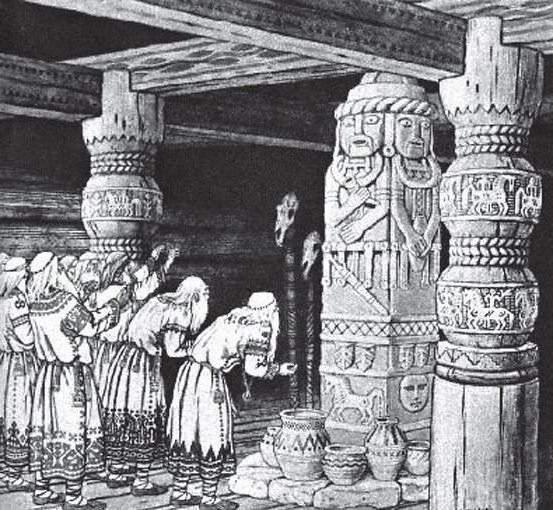 Schools were organized at the monasteries, people of all classes studied there, without restrictions. Almost all of the townspeople were literate, which is confirmed by numerous birch bark records. Painting is represented by iconography, frescoes, mosaics, and music is represented by church singing.
Schools were organized at the monasteries, people of all classes studied there, without restrictions. Almost all of the townspeople were literate, which is confirmed by numerous birch bark records. Painting is represented by iconography, frescoes, mosaics, and music is represented by church singing.
In many educational and popular science materials, the idea is widespread that Kyiv became the capital in 882, after the city was captured by Prince Oleg. This statement, as a rule, is based on a story from the Tale of Bygone Years, which, under the year 882, says: “And Oleg the prince in Kyiv, and Oleg said: behold the mother of the Russian city.” At first glance, everything is obvious, but the latest research by historians Ancient Russia show that the formation of ideas about Kyiv as the capital was a much more complex and lengthy process.
Examples of using
In 882, Rurik's successor, the Novgorod prince Oleg the Prophetic, captured Kyiv, which from that time became the capital of Russia.. (Wikipedia, Capitals of Russia)
In 882, Kyiv became the capital of Russia and since then has received the honorary title of "mother of Russian cities". (Material on the site "Because. Ru")
| V.M. Vasnetsov. Baptism of Russia. 1885-1896. |
Reality
A rather detailed analysis of how ideas about Kyiv as a capital were formed was given in his article “Was there a capital in Ancient Russia” by A.V. Nazarenko.
The term "capital" itself, the researcher writes, is not fixed in the Old Russian language. Its analogue, "table", or "capital city" is known. However, the "table" was not only Kyiv, but also a number of other cities of Russia, which were owned by representatives of the ancient Russian princely family, for example, Novgorod. Kyiv, being the capital, should at least be distinguished by some specific definition, or even be called something else.
Such epithets do appear in the sources, but only in the 11th-12th centuries. One of them, the “oldest city”, is recorded in The Tale of Bygone Years, in the story of the events of 1096: about the invitation of the Kyiv prince Svyatopolk Izyaslavovich and Pereyaslavsky, Vladimir Vsevolodovich (Monomakh), their cousin Oleg Svyatoslavovich, to Kyiv, for conclusion contracts. In another text, the "Word for the Renewal of the Church of the Tithes", dating from the middle of the 12th century, Kyiv is called "the elders in the cities", the Kyiv prince - "the elders in the princes", and the local metropolitan - "the elders in the saints".
Another definition, the very “mother of cities”, is a direct copy from the Greek mHtropolis, from one of the epithets of Constantinople, and is used to “equalize” the status of Kyiv with Constantinople, Nazarenko notes. According to him, this expression is no longer so common; in addition to the chronicle story about the capture of Kyiv by Oleg, only its use in the memorial service of consecration in 1051/3 of the church of St. George in Kyiv attracts attention; here the city is also called "the capital city".
The concept of the all-Russian capital was formed in the XI-XIII centuries, the author of the article notes. In itself, the idea of a single, main "capital city", according to A.V. Nazarenko, organically belongs to the complex of imperial political ideas; attempts to form and implement it have been repeatedly made in the Western, Latin world. Plans for the construction of a single capital were repeatedly undertaken by the Frankish, and later by the German rulers, he writes. So, Charlemagne tried to create a national center parallel to Rome with elements of sacralization in Aachen. Otto III tried to embody the same, essentially "Rome-centric" idea, when he tried to organize an empire with a center in Rome according to the late antique model. Frederick I Barbarossa was also an apologist for the empire ruled from Rome. However, a number of such important factors as the fragmentation of the feudal period, political and ecclesiastical polycentricity (as well as the opposition of these centers) prevented this idea from being realized in the West.
In Russia, where such a concept could have developed based on the Constantinople, and not on the Roman model, its formation was significantly facilitated by the era of the autocracy of St. Vladimir and Yaroslav the Wise, during which a fairly developed metropolitan ideological complex managed to take shape around Kyiv, which contributed, according to A. AT. Nazarenko, further, more distinct crystallization of the idea of eldership of Kyiv. In addition, the researcher notes that the fundamental connection that existed between the church-administrative unity of the country and the idea of the political sovereignty of its ruler, made the presence of the all-Russian Kyiv Metropolis the most important prerequisite for the formation of the idea of the state unity of Russia and its preservation in the conditions of political particularism, which, in turn, , stabilized the idea of Kyiv as the capital of Russia as a whole. All together, this formed a strong ideological complex, which determined the amazing historical survival of the idea and feeling of all-Russian unity, concludes A.V. Nazarenko.
Sources and literature
Nazarenko A.V. Was there a capital in Ancient Russia? Some comparative historical and terminological observations // A.V. Nazarenko. Ancient Russia and the Slavs (Historical and Philological Studies). Ancient Russia and the Slavs (Ancient States of Eastern Europe, 2007). M., 2009. S. 103-113.
In two essays, El. Blinova tells about interesting and important historical periods in the life of our region. In the first - about how the city of Vladimir became the capital of ancient Russia; in the second - about the XIII century, formidable for the Motherland, and about the glorious deeds of the great Russian commander Alexander Nevsky, who reigned in Vladimir for eleven years.
More than a thousand years ago, in the 9th century, a huge Slavic state was formed in Eastern Europe - Kievan Rus.
Russian land stretched from the White Sea in the north to the Black Sea steppes in the south, from the Carpathian Mountains to the Urals.
At the end of the 10th - the first half of the 11th century, Kievan Rus, as K. Marx noted, entered its heyday, becoming the largest and most powerful state in Europe. It was neither Ukrainian, nor Belarusian, nor Great Russian, but was the common historical cradle of these Slavic peoples. But the Kievan state turned out to be short-lived. The development of feudal relations in it led to the formation of local economic and political centers. With their growth and strengthening, the importance of Kyiv fell.
The result of the development of feudal relations was the intensification of the exploitation of the working population of villages and cities. Already in the XI century in the Old Russian state there were open actions of the oppressed classes against the feudal lords. The first major movement "the great rebellion" in the Suzdal land dates back to 1024.
In the fight against all manifestations of anti-feudal protest, the feudal lords vigorously strengthened the apparatus of power in different parts of Russia.
As a result of feudal fragmentation on the territory of Russia in the XI-XII centuries, more than ten feudal principalities were formed.
The largest of them were: Novgorod, Polotsk, Rostov-Suzdal (Vladimir-Suzdal), Galicia-Volyn, Chernigov.
Of the isolated lands, the Vladimir-Suzdal principality acquired the greatest importance. It occupied a very vast territory from Nizhny Novgorod to Tver along the Volga, to Gorokhovets, Kolomna and Mozhaisk in the south, including Ustyug and Beloozero in the north.
Vladimir-Suzdal princes sought to subjugate the neighboring peoples. In the east and northeast, their power extended to the Volga-Kama (Mordovian and Mari) and Podvinsk lands. Ships have been sailing along the Volga since ancient times. Russia traded with the peoples of the Caucasus, with whom cultural ties were also maintained.
The north-eastern part of the territory of the Old Russian state was distinguished by some features in its socio-political development.
It was relatively remote from the center of the Old Russian state and less dependent on the power of the Kyiv prince. The boyars-landowners were actually the owners of this region. The political centers here were Rostov, the citadel of the "old boyars", and Suzdal. By the 12th century, significant changes had taken place in the region. The population increased sharply, primarily as a result of colonization from other regions of the Old Russian state, especially those that were attacked by nomadic Pechenegs and Polovtsians.
This led to the emergence of new groups of the population, not associated with the "old" Rostov boyars and independent of it, new cities arose, the most important of which was Vladimir-on-Klyazma, founded under Vladimir Monomakh.
The Vladimir-Suzdal land becomes the patrimony of the Pereyaslav prince Vladimir Monomakh at the end of the 11th century. Vladimir Monomakh was born in 1053. His father was Vsevolod, the beloved son of one of the powerful Kyiv princes Yaroslav the Wise, and his mother was Princess Mary, daughter of the Emperor of Byzantium Constantine IX Monomakh.
Vladimir Monomakh with a large retinue visited his northeastern possessions several times.
During one of these campaigns, in order to further strengthen and protect his fiefdom - the Rostov-Suzdal land - from the devastating raids of other feudal princes, Vladimir Monomakh founded a new city on the site of a village of landowners and artisans on the left, elevated bank of the Klyazma River.
Vladimir Monomakh, who knew Kyiv and its fortifications well, chose an elevated place for the new city as well, so that natural boundaries could be reinforced with additional fortifications.
It was in 1108. The city received a name - Vladimir.
The last years of his life, Vladimir Monomakh was the Grand Duke of Kyiv and almost did not deal with the affairs of his northeastern possessions.
The political weight and importance of the Vladimir-Suzdal land increase sharply during the reign of Yuri Dolgoruky, the youngest son of Vladimir Monomakh.
Yuri was aware of all the turbulent events that took place in ancient Kyiv in connection with the struggle for a great reign, and at the same time he settled in his patrimony - the Vladimir-Suzdal land. He extended his influence to Novgorod, Murom, Ryazan, established a strong alliance with the Galician land. The name of Yuri Dolgoruky is associated with the construction of new and strengthening of existing cities.
The founding of Moscow by Yuri Dolgoruky is one of the most prominent pages of his activity. For the first time Moscow is mentioned in the annals under 1147.
The results of the excavations carried out in recent years allow us to conclude that long before that there was a craft village of our distant ancestors - the Vyatichi, and in the western part of the Borovitsky hill - a small fortress.

